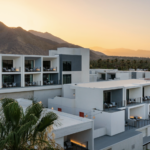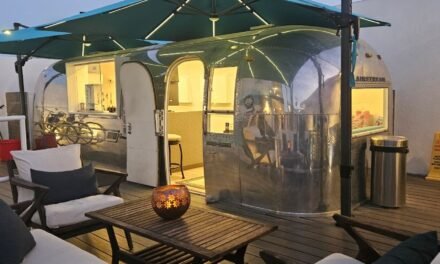
Experience Jurassic nature in technicolor on the Azores’ São Miguel Island
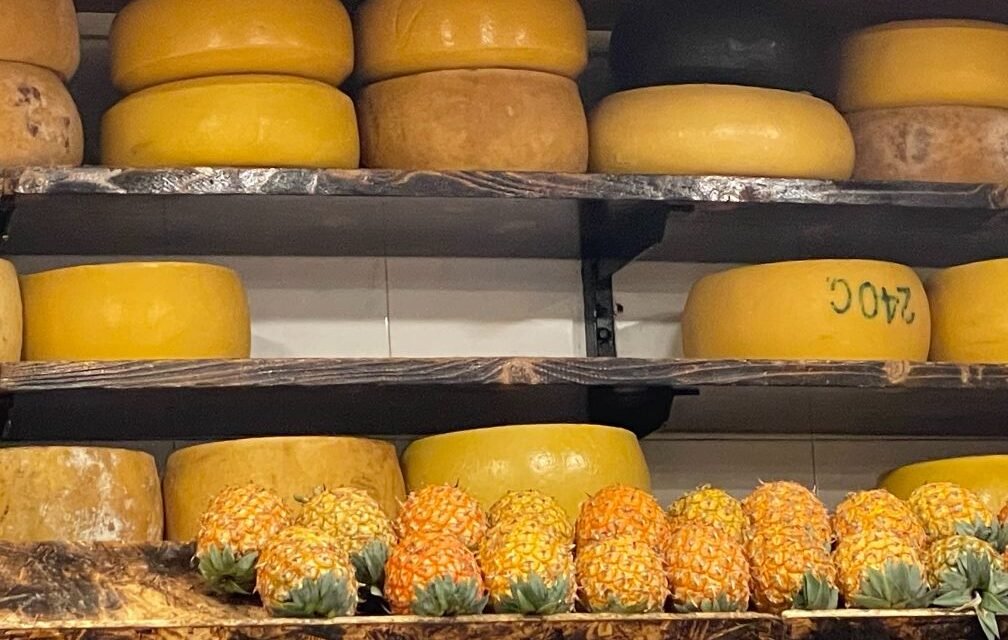
São Miguel is known as the “Green Island” due to its lush landscapes and rolling, verdant hills. It feels a bit like Ireland, Iceland and Hawaii all bundled up into one enchanting place.
Most visitors to the island arrive in Ponta Delgada, the lively, cosmopolitan city that serves as the economic hub of the Azores. As with our previous experience on Terceira, Archipelago Choice scheduled several, privately guided tours for my husband and I, focusing on nature, landscape, history and food. They also booked our accommodations and transfers, and provided a wealth of information about the island.
While on the island, we stayed in Ponta Delgada at Hotel Do Colégio, a conveniently situated property, steps from many attractions, restaurants and shops. This boutique hotel is located in a manor house, built in the 19th century during the Golden Age of the orange trade between Ponta Delgada and England. It served as a school for many years, before eventually becoming a hotel.

City gates of Ponta Delgada
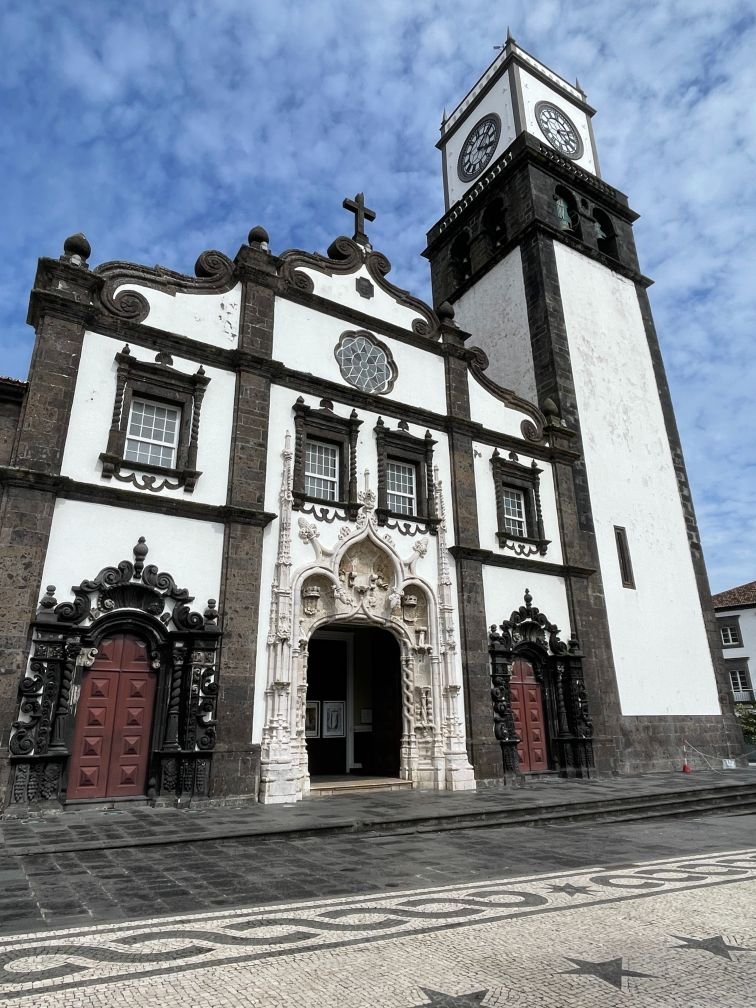
Church of Saint Sebastian
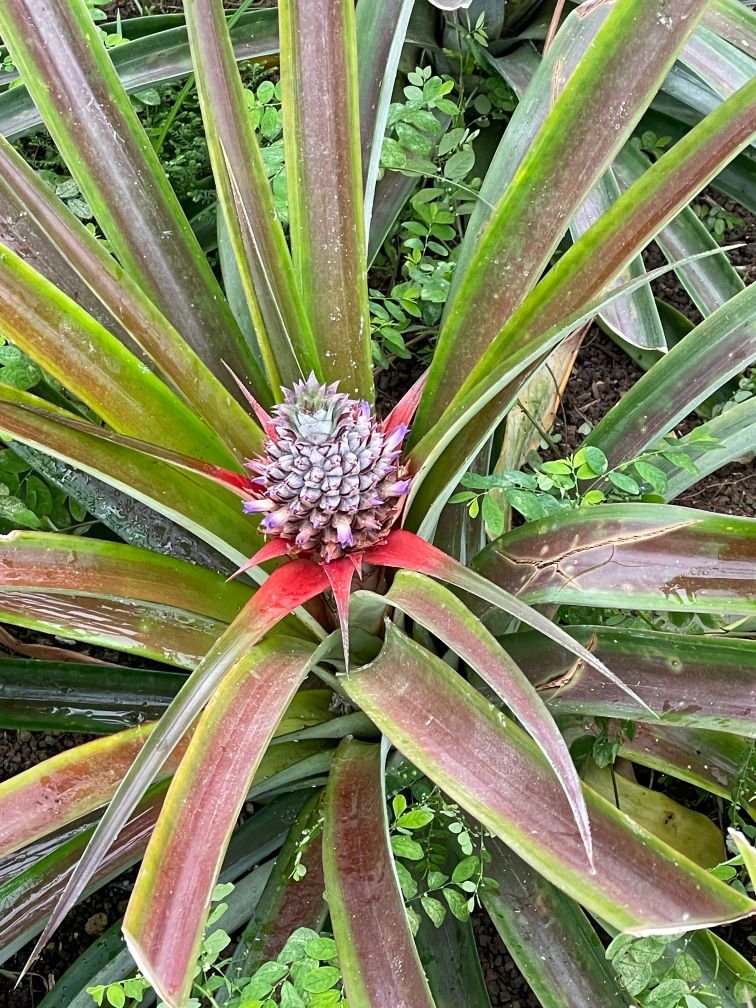
Azorean pineapple at Arruda Pineapple Plantation
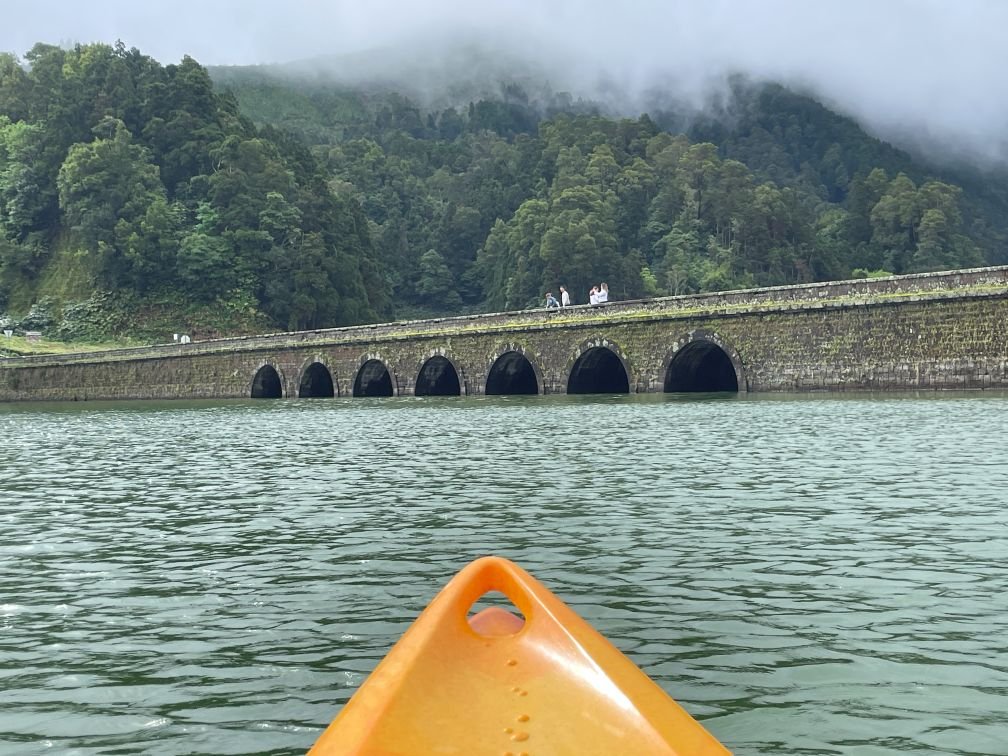
Kayaking the lakes at Sete Cidades

Cooking holes for the Cozido at Furnas
The place combines historical charm with all the modern comforts. Rooms are spacious and tastefully decorated, with all the creature comforts you’d expect. Breakfast is a buffet with plentiful options, and there’s a nice outdoor pool for a refreshing dip after a day’s activities.
Our first introduction to the city was on the Ponta Delgada Food Tour, a combo history and food excursion, where we learned how Azorean cuisine, history, religion, agriculture and the sea are all inextricably linked. We started the tour off with cups of local green tea, along with queijadas, a milk and egg pastry indicative to each island. This particular pastry had essences of pineapple, orange and cinnamon. Azorean pineapples, we were told, are special – sweeter with less acidity – and they are the only pineapples in the world grown in greenhouses. A later side trip on our own to Arruda Pineapple Plantation confirmed this fact, as we were able to see the plants at various stages of growth within a series of greenhouses.
While strolling around town, our guide noted the centuries-old architecture, cobbled streets (each marked by a different pattern of stones to help intoxicated sailors find their way home), city market and colorful waterfront, interspersing his commentary with snippets of historical background.
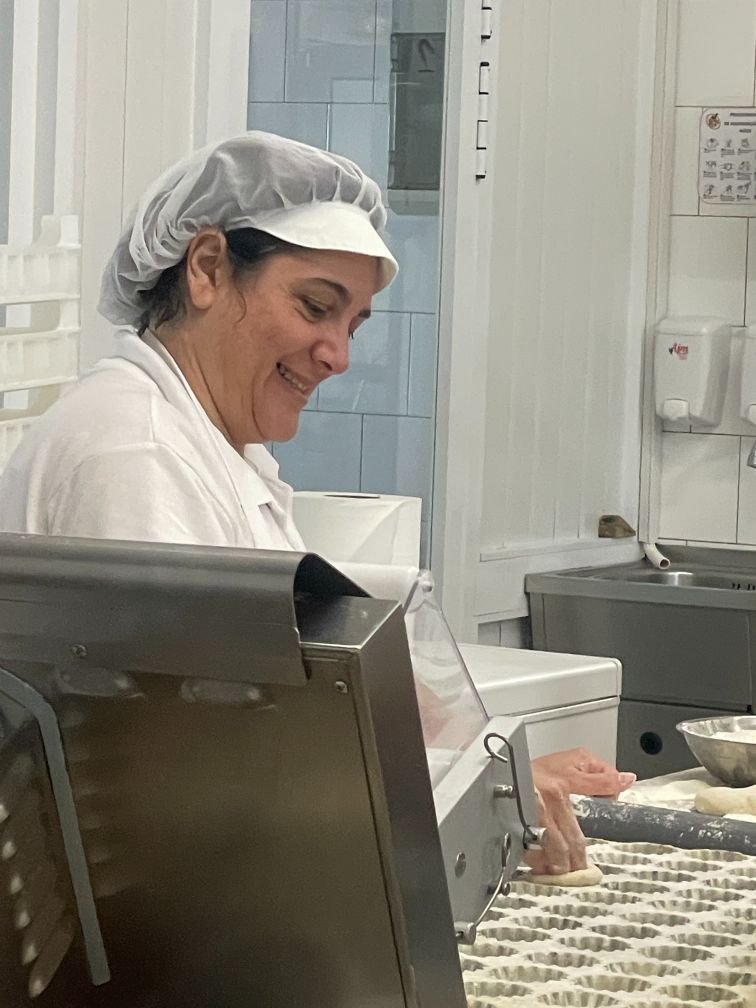
Making pastries at Do Morgado
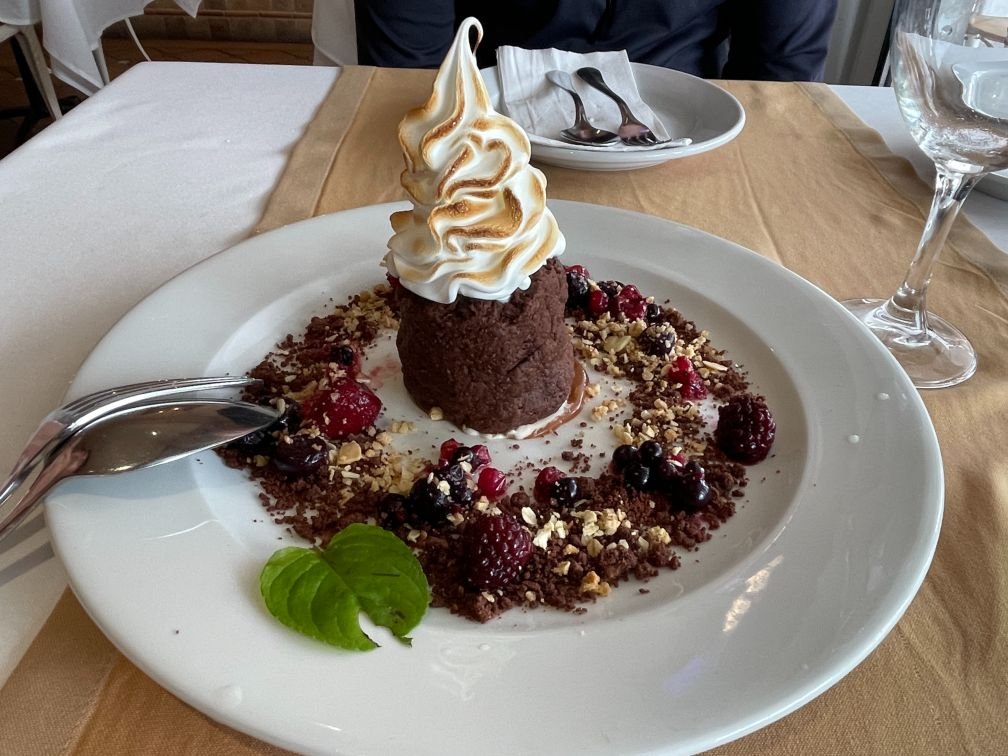
Volcano of Fire!

Limpets
The authentic way to enter the charming town square is through its city gates, a structure of three arches built in the typical Azorean black basalt rock and whitewashed masonry. Nearby is the Church of St. Sebastian, a grand Gothic and Baroque style building with a façade of sculptures carved in basalt, and a magnificent entrance door.
Our guide then took us to the Jesuit College, a campus that includes a Baroque-style church, public garden, library and collection of sacred art from the Carlos Machado Museum. In the 1590s, Ponta Delgada welcomed Jesuit priests to open a school to teach Latin and other subjects. The church was not totally completed, as the Jesuits were expelled in 1790. Inside, the carved, gold altar and nave is a showstopper, albeit unfinished.
At Nossa Senhora da Esperanca Convent, we saw more riches on display in the ornately decorated small, 16th century chapel. There’s stunning tile work, sets of altars from different artistic periods, jewels, statues and more. The true treasure, however, is the Senhor Santo Cristo dos Milagres, an 18th century religious statue and piece of art, associated with an image of Christ depicted in the events of the New Testament. It is only taken out once a year after Easter to lead a procession through the streets of the city.
São Miguel’s largest fortress, the Forte de São Brás, is another highlight. This formidable bastion once protected the island from attacks by pirates and privateers. These days, it’s home to the Military Museum of the Azores.
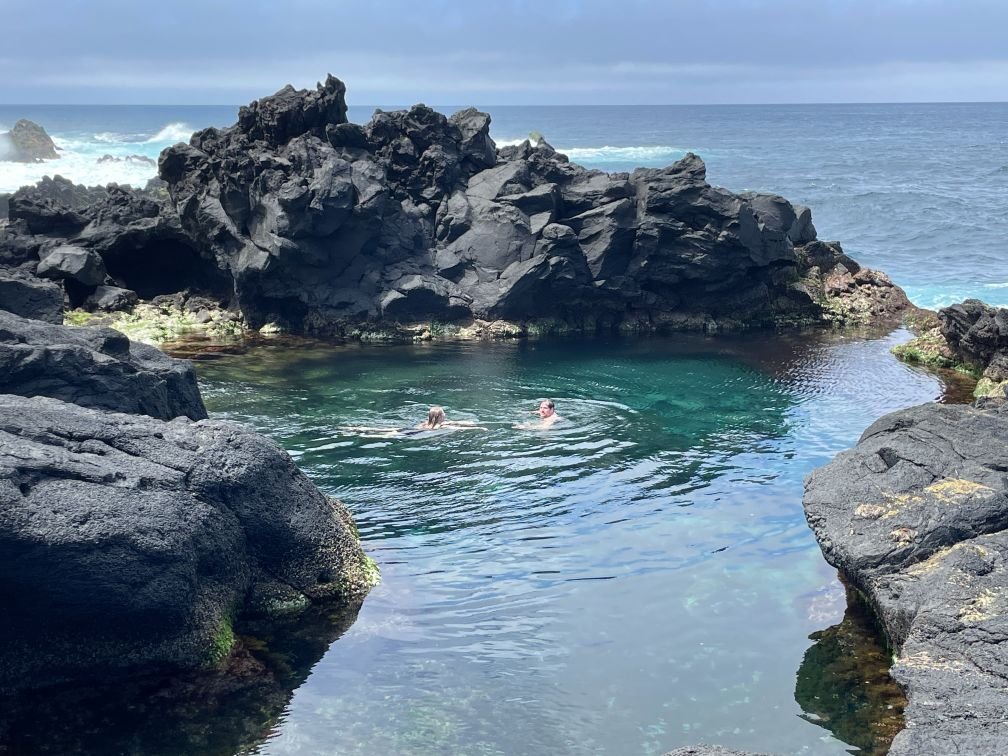
Hot pools
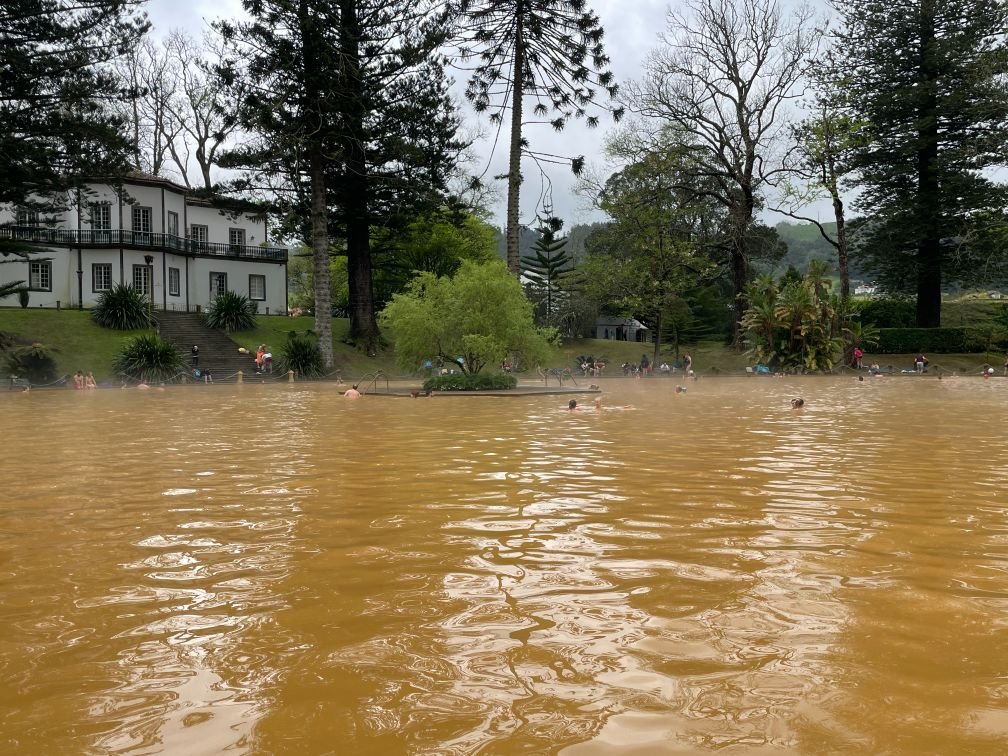
Ginormous thermal pool at Terra Nostra Park

Furnas
Our tour concluded with a fine dining experience of Portuguese specialties at a local restaurant. We were treated to an array of dishes including limpets, chicken soup with rice, octopus, tuna with sweet potatoes (me) and steak cooked on a rock (my husband). Dessert was a “Volcano of Fire,” a merengue, cookie dough, ice cream and berries concoction in a volcano shape. The chef outdid himself!
In the ensuing days, we explored the island’s natural marvels, including its many volcanic features. São Miguel is actually the most volcanically active of the nine islands.
One day, we drove to Sete Cidades or Seven Cities area, named for the seven peaks that surround a large caldera with twin lakes. As one of the Seven Natural Wonders of Portugal, these lakes, Lagoa Verde and Lagoa Azul, have become a symbolic image of the Azores.
The lakes are distinctly blue and green in color and their formation is often explained by a legend involving the tears of a green-eyed princess and a blue-eyed shepherd who shared a forbidden love. The scientific explanation, though, is simple: the depth of the larger lake, Azul, reflects the sky, while the smaller, shallower Verde mirrors the verdant hues of its surroundings.
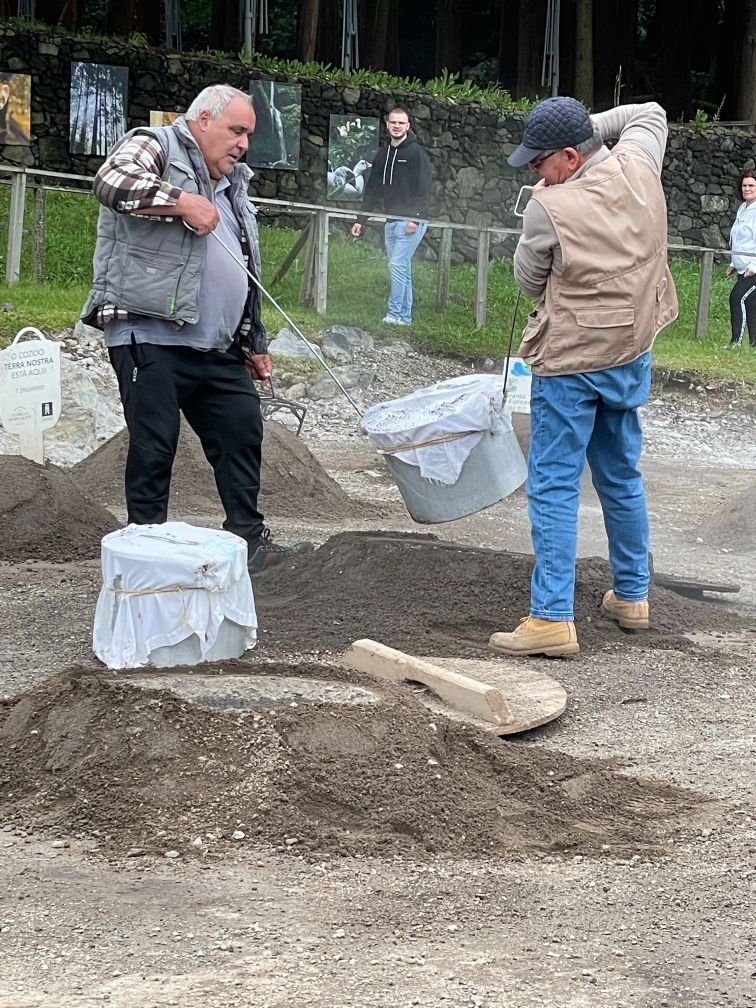
Lifting the Cozido pots out of the holes at Furnas
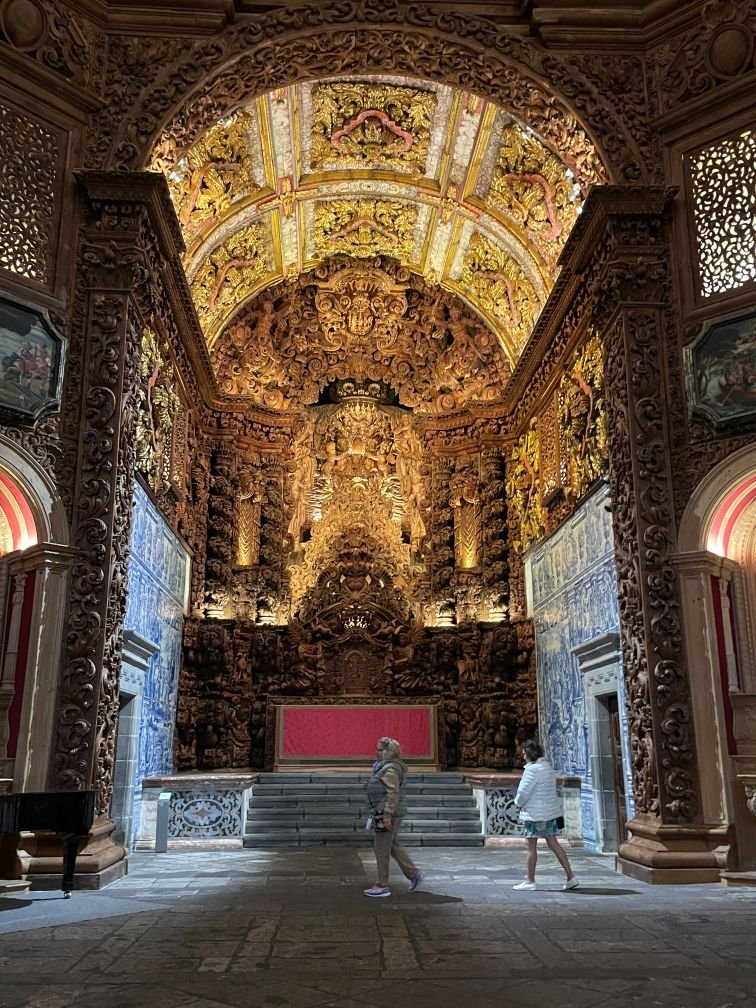
Ornately carved gold altar and nave
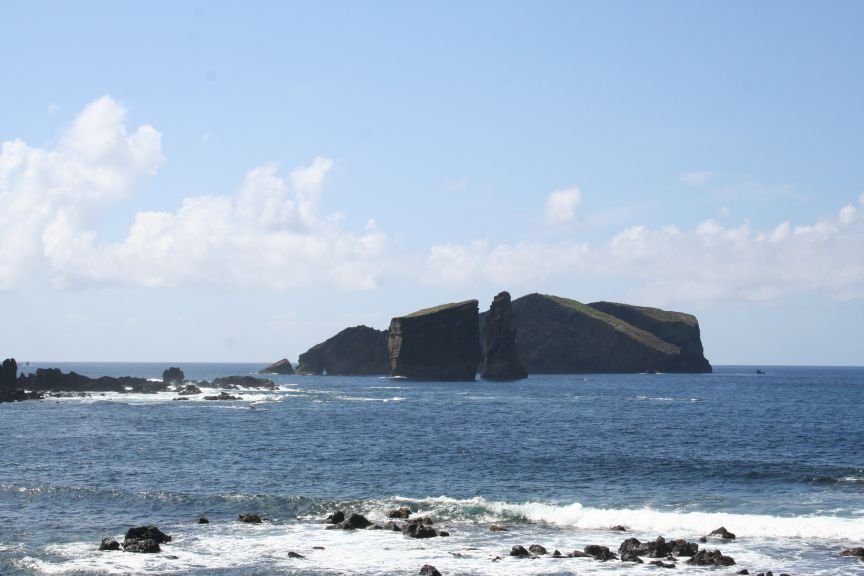
Mosteiros courtesy of Archipelago Choice
To fully appreciate this scene, visitors head up to the King’s Viewpoint. Unfortunately, this vista point was mired in fog when we arrived, so we were not able to get the full panoramic experience. We discovered there is much truth behind the adage that you can experience four seasons in one day on the Azores! However, we did enjoy kayaking on the lakes and paddling through the arches that separate the bodies of water.
We then stopped in the Village of Sete Cidades for lunch. A very photogenic, neo-Gothic style church with a promenade of Japanese cedars caught my eye and my camera.
In the afternoon, we headed to Mosteiros, where the Islets of the Monasteries are located. These are four sea stacks, constituting the eroded remains of a coastal caldera that were destroyed in an eruption. Together, they look like a monastery, creating a mystical, haunting scene.
We ended the day on the west coast of the island at Ponta da Ferraria, where you can actually swim in a volcanic hot pool. The water here is naturally heated by underwater vents from the Sete Cidades caldera. Go an hour before to an hour after low tide for the warmest water.
One of my favorite destinations on the island is the Furnas Valley. Furnas is the most easterly volcano on São Miguel, and this is where the island’s volcanic nature is most on display. On the shores of Furnas Lake, we witnessed an otherworldly geothermal scene of bubbling mud pools and sulfurous steam vents, akin to a mini Yellowstone. But Yellowstone doesn’t have a burial ground of cooking holes!

Picturesque viewpoint

Photogenic church in the Village of Sete Cidades
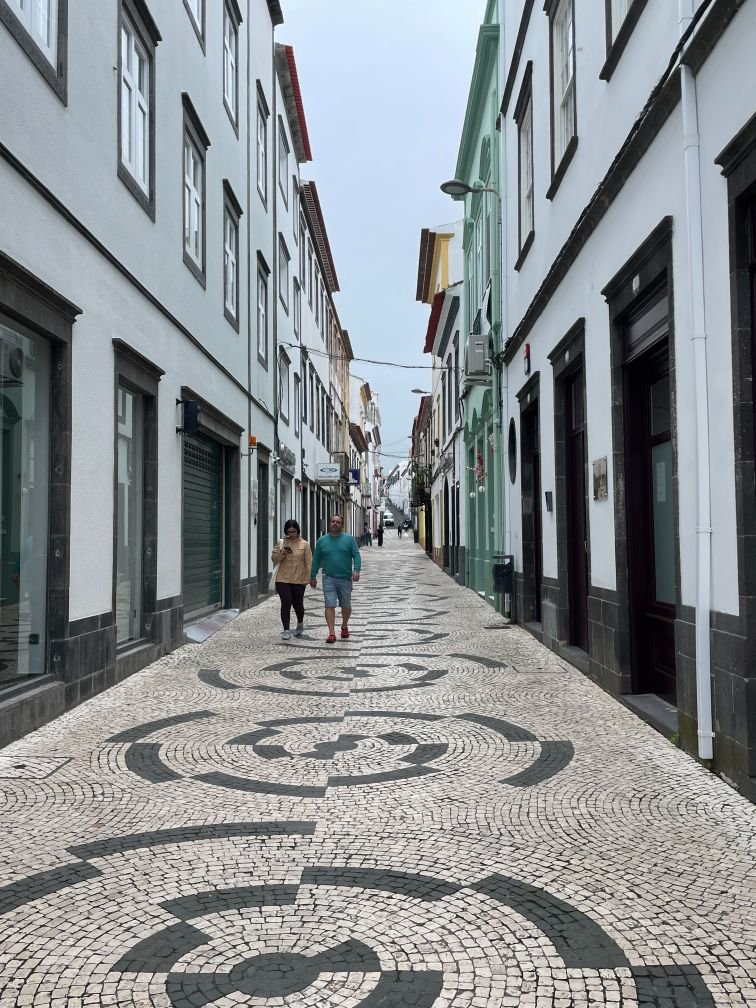
Patterned streets in Ponta Delgada
These holes have been specially dug and serve as ovens for the area’s traditional dish, Cozido das Furnas, a stew that’s cooked in the ground by chefs using the natural geothermal heat. The stew, which is a combination of different cuts of meat and blood sausage, along with veggies and potatoes, goes into the pot, which is then inserted into the hole. There it will cook for the next six to eight hours. This time-intensive dish dates back nearly 100 years. And the recipe and method of cooking have been handed down through generations of local families.
Visitors interested in seeing the pots come out of the holes try to arrive at the lakeshore around noon, as this is when men from the nearby restaurants come and collect the pots for lunch. As paparazzi, we gathered, cameras aimed, and watched in fascination as the men completed what is simply a normal day’s chore in these parts.
The village of Furnas is also a geothermic mecca with thirty springs and geysers, varying in temperature and chemical composition. The geysers are remains of the original Furnas volcano. A nearby laboratory studies and preserves the microorganisms which live in and around the geysers.
Water seems to spout from every corner of the town. Some of the streams are hot, some cold and some are even carbonated. We got to touch and taste. It was quite a unique treat to drink sparkling water from a spring!
Terra Nostra Park is also one of many must-see attractions. This park contains the 200-year-old Terra Nostra botanical gardens, featuring species from around the world. It originated in 1775 when American expat Thomas Hickling built a summer house on the site. Fast forward a few centuries and today, it’s a paradise of grottos, ponds, waterfalls, colorful vegetation, aromatic flowers and topiary. You can spend hours just wandering along the paths.
The park has its own natural hot springs, too, which feed a ginormous thermal pool, a popular spot for locals and visitors. Soak in the warm, mineral-rich water, for the ultimate in relaxation. Note: the muddy, brown water might leave marks on your swimsuit!
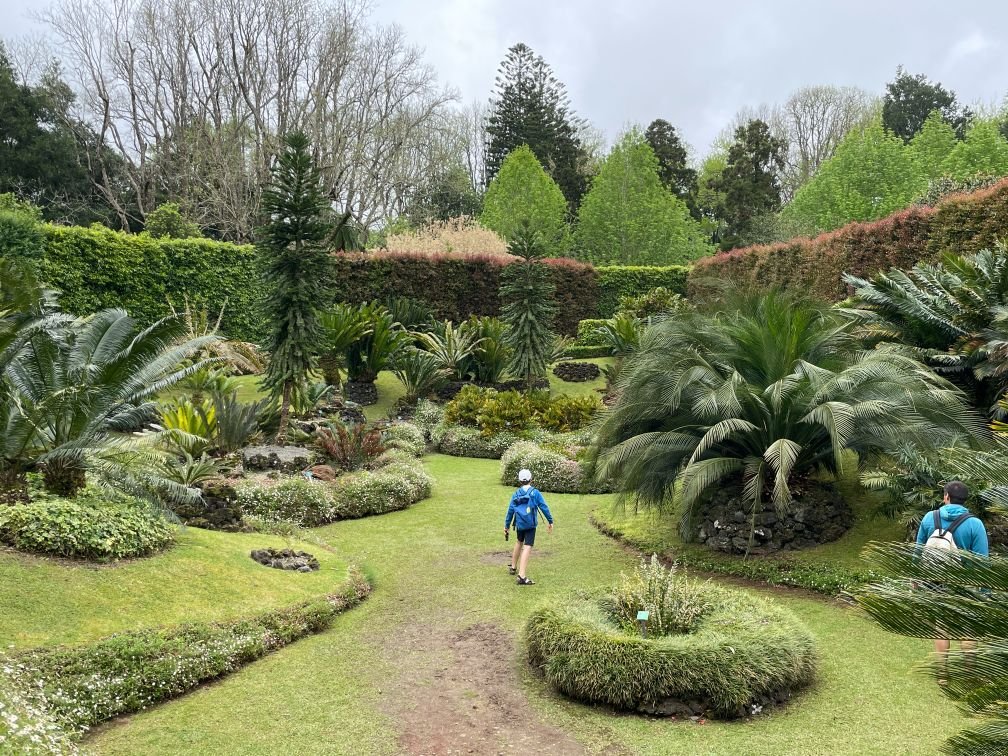
Terra Nostra Garden
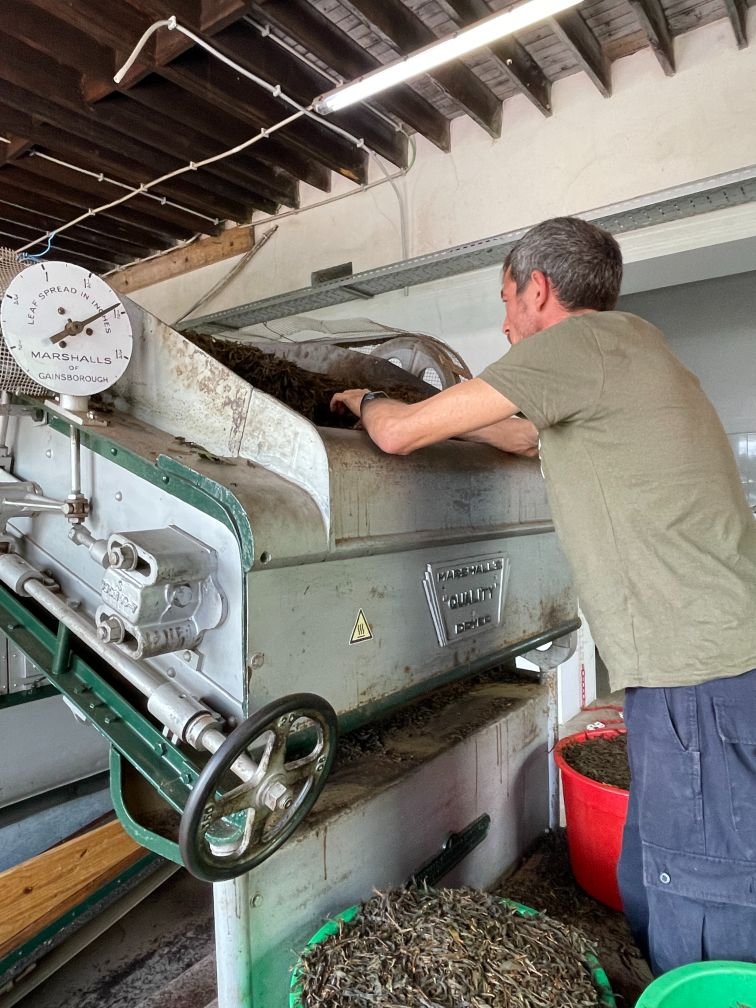
Take a tour of Gorreana Tea Plantation

View of tea fields and beyond
As a tea drinker, I was delighted with a visit to Gorreana Tea Plantation. Founded in 1883, this is the oldest tea factory in Europe that’s still in operation. The island’s mild climate, as well as its acidic volcanic soil, are ideal for production of the company’s 100% organic black and green teas. A self-guided tour takes you through the entire tea process, from picking to packaging, followed by the opportunity to sip a sample or two of the company’s products while overlooking the spectacular tea fields.
Driving around São Miguel, you’ll find numerous viewpoints or miradouros, offering memorable vistas. Stop and take them in. Waves crash against the rocks, as you look down from the cliffs at the mesmerizing seascape. It’s hard to tear your eyes away from such dramatic beauty. Though I took many pics, I tried to cement the scenes within me, so I could call them up at will when long gone from this magical island.
On our final day of the trip, we did a birdwatching tour with Gerby Birding. Our guide and owner of the company, Gerby Michielsen, is a longtime resident of the Azores by way of Holland. He is passionate about nature and especially ornithology. With close to 400 species, the Azores is a birding mecca.
Though my husband and I are not birders, we were intrigued at the prospect of seeing some of these species, particularly the elusive Azores Bullfinch, one of Europe’s rarest birds. We heard that people come from all over the world just to get a glimpse of this creature.
You can imagine our excitement then to spot not one, but several of these birds, with their distinct black cap and tail, perching on bushes and in the trees. We also spied the São Miguel Goldcrest, Azores Woodpigeon, both Common and Roseate Tern, Greenfinch, Chaffinch and Grey Wagtail. These sightings were all made possible with the assistance of Gerby’s eagle eyes, well-attuned ears and patient observation. We dutifully followed his rules: stay close, no sudden moves and keep quiet. And the rewards were many.

City gates of Ponta Delgada









